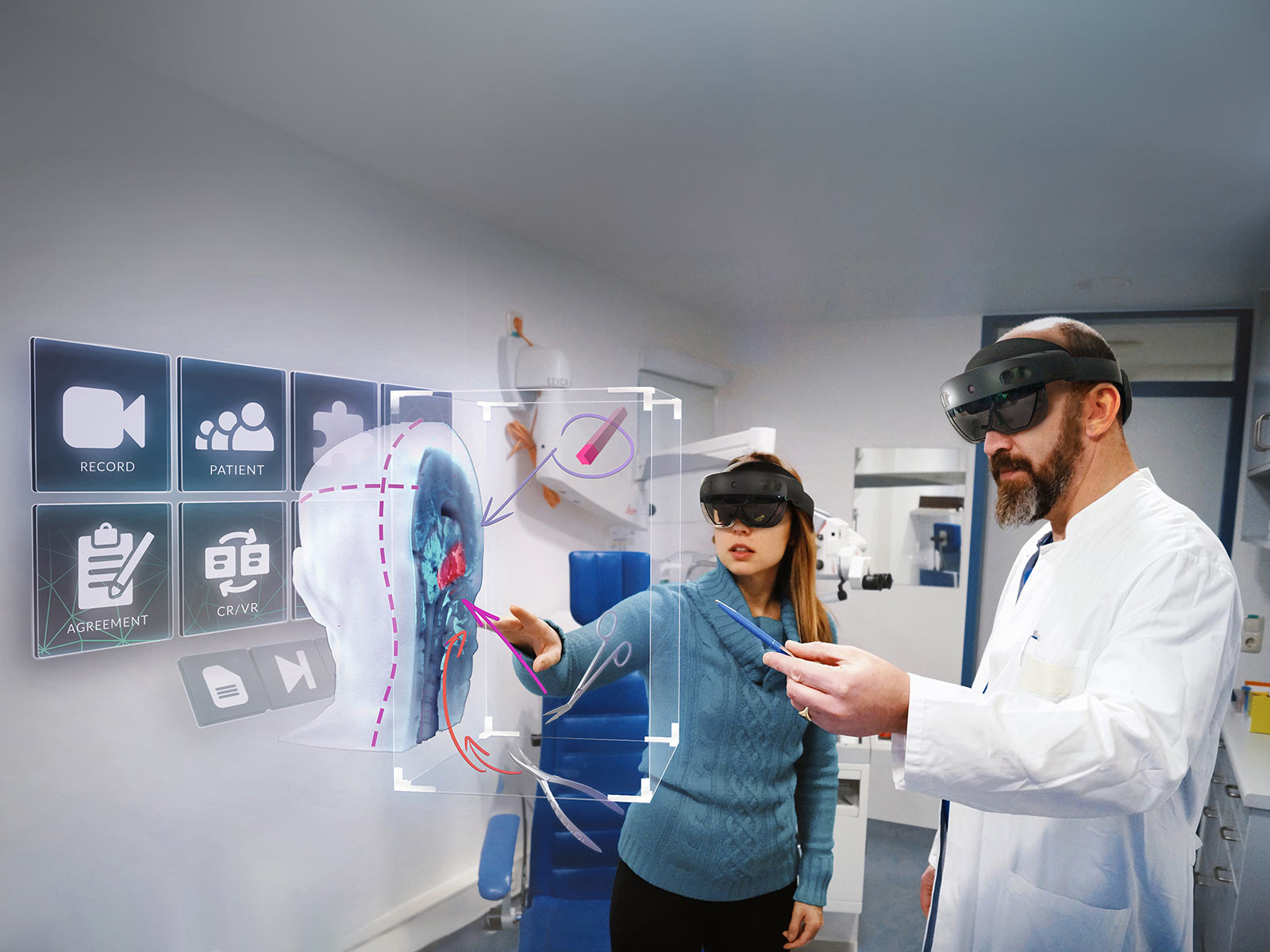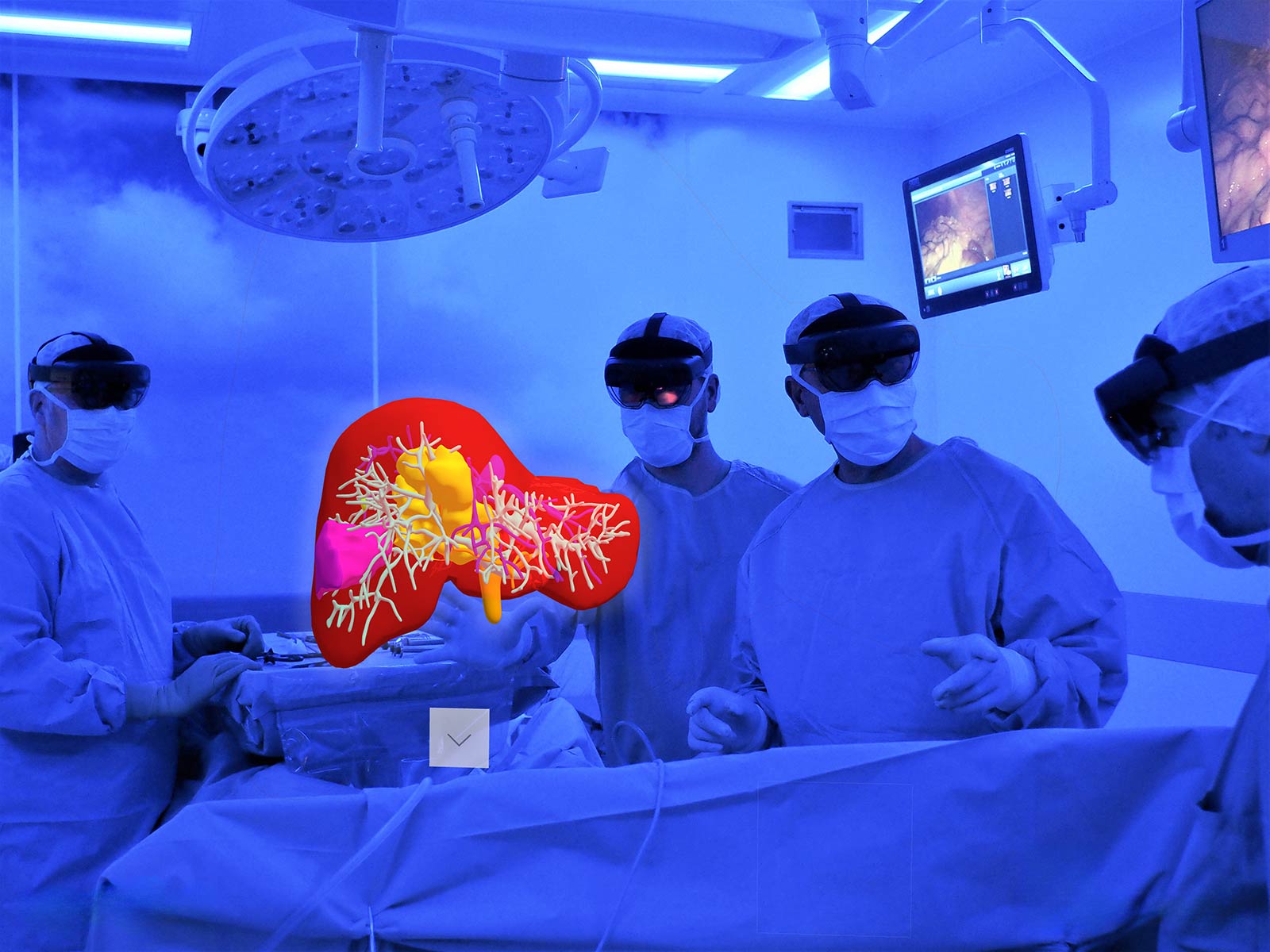
Issue 49
Feb 2024
THE BANYAN TREE

The Age of Extended Reality (XR) has dawned, and it is set to gain momentum in 2024. With improved XR devices such as Meta3, Vision Pro, and successors to the HoloLens, this technology is poised to make significant strides in healthcare. However, the critical question that arises is whether hospitals are adequately prepared for this technological transformation. From a global perspective, the answer appears to be a resounding "no." Fortunately, there are exceptions, and we'll explore them here.
How should a hospital prepare?
There remains a prevailing illusion that modern IT can be ensured in hospitals through on-premises solutions, i.e., local server installations. Recent cyberattacks on renowned hospitals in Germany have often been attributed to outdated infrastructures. Modern XR applications require stable cloud environments capable of automatic scalability. Here, keywords like Kubernetes, GPU, Defense-In-Depth, AI segmentations, generative AI, and Copilot come into play. A scalable cloud is the prerequisite. Secondly, hospitals need a private 5G network with low latency and speeds exceeding 700 megabits in operation rooms. While these may require significant investments, they are crucial for shaping the future of medicine and ensuring a hospital’s competitive advantage. 5G can secure a cloud, as every XR device, robot, or laptop is equipped with a 5G SIM card that protects against unauthorised access, providing precise access control.
Third, hospitals need medically certified applications, which the HoloMedicine® platform offers. It allows for the deployment of new upgrades and certification of new medical use cases every three months. Furthermore, it empowers hospitals to maintain independence, foster innovation, and integrate external suppliers like medical manufacturers into their architecture. Costs are kept fair and consumption-adjusted through cloud and SaaS solutions.
A scalable cloud is the prerequisite. Secondly, hospitals need a private 5G network with low latency and speeds exceeding 700 megabits in operation rooms. While these may require significant investments, they are crucial for shaping the future of medicine and ensuring a hospital's competitive advantage.
What are the use cases enabled by this triad?
Picture this scenario: Medical professionals no longer rely on laptops but wear lightweight XR glasses, enabling them to work hands-free. They can overlay patient information, surgical procedures, avatars, and more, streamlining their workflow. Assistant doctors have virtual senior doctors by their side, even when those seniors are at home. Doctors collaborate across distances like a virtual tumor board. Patients can virtually join their doctor at the hospital while remaining in the comfort of their homes. During surgery, the virtual CT scan is superimposed on the patient, enhancing precision and quality. Meanwhile, medical students utilise holograms to accelerate their learning. All these advancements enhance patient safety and quality of care.
A programmatic approach to progress
Singapore is poised to be the hub of this future. Collaborations between apoQlar, Singtel, Microsoft, NUHS, and NUS have already introduced and implemented this technology. Over 150 user cases have been identified and are being gradually implemented, and other hospital chapters in Singapore are joining the movement. Hospitals from around the world visit Singapore to witness the solution in action. Importantly, policymakers are recognising the importance of this transformation. In the field of medicine, holograms will become more crucial than self-driving cars or any other innovations. It’s no longer about hospital walls; it’s about the IT infrastructure. The future is here, and those who lead it will shape the course of healthcare for years to come.
In the field of medicine, holograms will become more crucial than self-driving cars or any other innovations. It's no longer about hospital walls; it's about the IT infrastructure. The future is here, and those who lead it will shape the course of healthcare for years to come.

Discussing a surgery procedure with a patient.
In conclusion, the advent of XR in healthcare is inevitable, and its impact promises to be transformative. Hospitals must prepare themselves by embracing scalable cloud environments, establishing private 5G networks, and adopting medically certified applications. These preparations will usher in an era where healthcare professionals work seamlessly with XR devices, ultimately improving patient safety and quality of care. Singapore serves as an example of what is possible when industry leaders and policymakers come together to drive innovation in healthcare. The future of medicine is now, and it’s up to hospitals to lead the way.
To gain a deeper understanding of XR and Holomedicine and explore the fascinating facets of digital health, join us in our two-day DTX HealthSG Leadership masterclass. Designed for visionary healthcare and business leaders, this immersive event is curated by NUS Medicine Continuing Education and Training. It offers a deep dive into sustainable growth strategies within Singapore’s dynamic HealthTech realm.
Click here to register or for more details on the two-day masterclass
This column is dedicated to the pursuit of continuous learning and development and takes its name from the banyan tree. It has roots that grow deep, anchoring it firmly in the soil. The tree spreads its shade wide and far and provides space for reflection and discussion. We invite you to come and take a seat under its shade.
More from this issue



